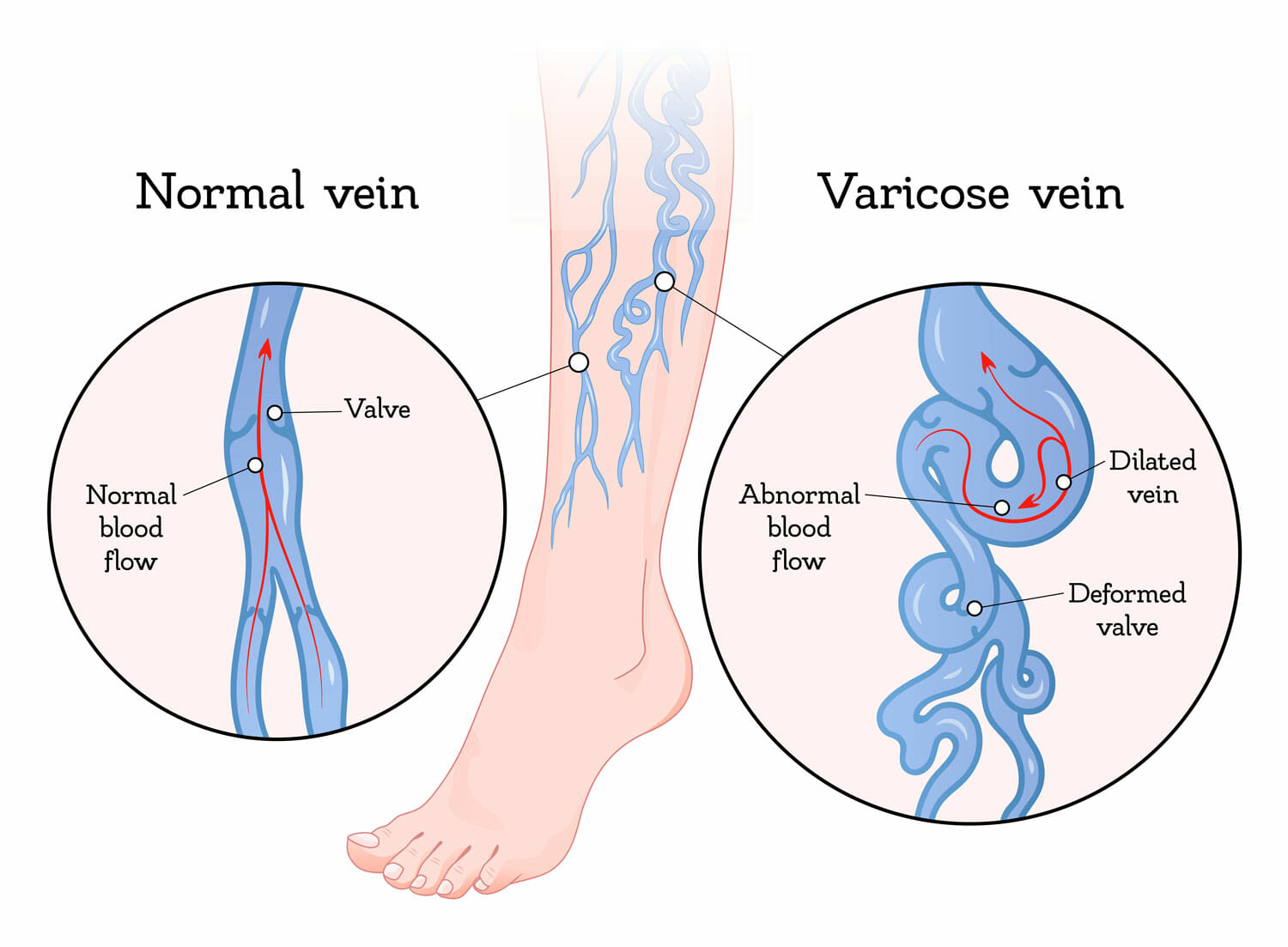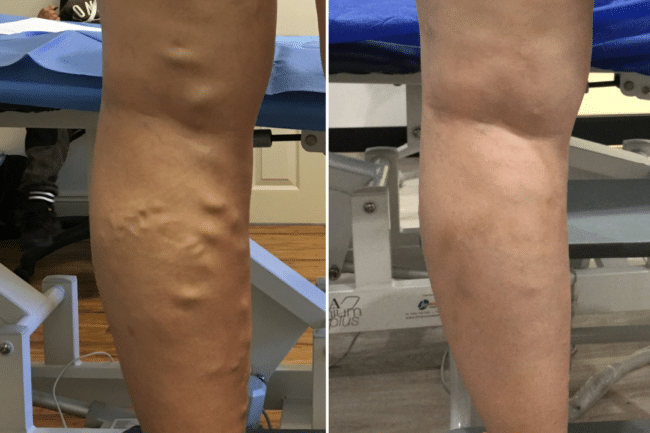Varicose veins impact around one in every three Australians, and the symptoms can range from lumpy veins to extremely uncomfortable aches and pains. Thankfully, there is a range of treatment options available! If you are currently investigating treatment, you may have read that the disease can return even after a specialist treats the varicose veins. So, can varicose veins be cured? Or once you have them, are you stuck with them for good?
Learn more about why these veins develop in some people and not others: Varicose veins causes
Can varicose veins be cured?
Technically, no one can permanently cure varicose veins as the condition that causes them – Chronic Venous Insufficiency (CVI) – results in permanent damage to the valves that control blood flow back to the heart and lungs.
Currently, there is no way to repair the vein using a microscopic scalpel. In the same way, you might fix the faulty valve on a water pump. Additionally, there are no proven natural, or pharmaceutical solutions to reverse the damage.
On top of that, some patients find that varicose veins return after they have undergone treatment. However, this is rarely the same varicose vein returning. Rather, it is a new one that formed from an existing healthy vein.
So, can I prevent new varicose veins from forming?
Yes, you can! While they won’t be completely foolproof, there are steps you can take to lower your risk of developing new varicose veins. First, make sure to live a healthy lifestyle. Specifically, eating a vein-friendly diet and doing gentle to moderate-intensity exercise like walking, swimming, or yoga will go a long way. Second, wear compression socks. These stimulate the muscles that pump blood upward and squeeze any pooled blood out of surface veins. Third, elevate your legs for 20-30 minutes a day. Lastly, try to avoid long hours of sitting or standing. If you’re at work, for example, try to move around every 30 minutes or so.
How do vein doctors treat varicose veins?
Well, you have a lot of options nowadays. A decade ago, the only way to remove varicose veins was a surgical process called vein stripping. During this procedure, a surgeon ties off the vein, makes several incisions, and pulls the vein out. As you can imagine, stripping results in a couple of days in the hospital, recovering from general anaesthetic, and a long recovery process. These days, however, specialists rarely recommend vein stripping as the first choice.
Doctors at The Vein Institute, for example, use gentle, minimally invasive methods. They insert a tiny catheter, laser fibre, or even a syringe into the veins. The fibre heats the vein and the catheter and syringe inject a substance that agitates its lining. Once that’s done, the vein seals off from the rest of the body.
The process is extremely safe. Basically, when a vein is closed, the neighbouring veins take over, routing deoxygenated blood back to the heart and lungs. The now-closed veins are naturally absorbed by surrounding tissue and will disappear in a few weeks.
All in all, removing a problem vein lets healthy veins take over. As a result, your circulation through that area will improve. Hence, you’ll see the vein size reduce, and also notice an improvement in symptoms.
So, if you’re looking for non-surgical options to treat the symptoms of varicose veins, Bauerfeind has a variety of options. Or, if you’re looking to treat your varicose veins, don’t hesitate to contact our team! You can book your consultation by calling us on 0420102637 (that’s 12 83467) or book online.
When to see a vein doctor
Remember, if your varicose veins don’t have symptoms, you likely won’t need treatment. Instead, you can opt for conservative methods like compression socks. However, if the veins do cause discomfort, you should get a specialist to check them.
How we treat varicose veins at The Vein Institute
First, we perform a full medical examination, using state-of-the-art venous duplex ultrasound. This determines the cause and severity of the varicose veins.
The unpleasant symptoms of small varicose veins can often be managed by making simple lifestyle changes such as frequent exercise, healthy eating and wearing compression stockings to improve circulation. But none of these will provide a permanent solution and therefore none can eliminate the swollen veins.
Here at The Vein Institute, our doctors will recommend a number of treatment options:
- Ultrasound-guided sclerotherapy, where a tiny catheter is inserted into a small varicose or spider vein. The diseased vein is then injected with a sealant that makes the walls stick to each other and collapse. Not sure if you have varicose veins or spider veins? Try our vein self-assessment tool.
- Another technique is called radiofrequency ablation, which uses the heat of radiofrequency waves to close varicose veins.
- Similarly, endovenous laser ablation uses a laser to seal the varicose vein shut
- The Vein Institute was also one of the Australian pioneers of a non-surgical technique called medical superglue. The medical adhesive is safely and effectively used to close varicose veins.
All of the methods cited above are “walk in, walk out” performed in the comfort of our clinic. These treatments take under an hour and require little recovery time.
Learn more: Home remedies for varicose vein symptoms.
Seek expert advice
The doctors at The Vein Institute specialise in varicose vein treatment. We offer patients a comprehensive program using non-surgical laser treatment techniques. You can learn more in our Definitive Guide to Varicose Vein Treatment.
The benefits of non-surgical varicose vein treatment are:
- Walk-in walk-out treatment
- 98% success rate
- Extremely effective
- Can be performed at a clinic (no hospitalisation)
- No general anaesthetic
- Medicare rebates apply
- No downtime or time away from work
Call us on 0420 102 637, or fill out our booking request form.




